I have a database with following structure.
CREATE TABLE Party
(
PartyID INT IDENTITY
PRIMARY KEY ,
StatusID INT ,
Weigth INT ,
OldWeigth INT
);
GO
CREATE TABLE PartyLocation
(
PartyLocationID INT IDENTITY
PRIMARY KEY ,
PartyID INT FOREIGN KEY REFERENCES dbo.Party ( PartyID ) ,
LocationID INT ,
Distance INT
);
GO
CREATE TABLE PartyRole
(
PartyRoleID INT IDENTITY
PRIMARY KEY ,
PartyID INT FOREIGN KEY REFERENCES dbo.Party ( PartyID ) ,
RoleID INT
);
with some simple data.
INSERT INTO dbo.Party
( StatusID, Weigth, OldWeigth )
VALUES ( 1, -- StatusID - int
10, -- Age - int
20 -- OldAge - int
),
( 1, 15, 25 ),
( 2, 20, 30 );
INSERT INTO dbo.PartyLocation
( PartyID, LocationID, Distance )
VALUES ( 1, -- PartyID - int
1, -- LocationID - int
100 -- Distance - int
),
( 1, 2, 200 ),
( 1, 3, 300 ),
( 2, 1, 1000 ),
( 2, 2, 2000 ),
( 3, 1, 10000 );
INSERT INTO dbo.PartyRole
( PartyID, RoleID )
VALUES ( 1, -- PartyID - int
1 -- RoleID - int
),
( 1, 2 ),
( 1, 3 ),
( 2, 1 ),
( 2, 2 ),
( 3, 1 );
I want to query the following information
- Return sum of Weigth of all parties that has roleID = 1 in PartyRole table
- Return sum of OldWeigth of all parties that has statusID = 2
- Return sum of distances of all parties that has locationID = 3
- Return sum of distances of all parties that has roleID = 2
So the expected results are
FilteredWeigth FilteredOldWeigth FilteredDistance AnotherFilteredDistance
-------------- ----------------- ---------------- -----------------------
45 30 600 3600
Can we write a query that will query each table just once? If no what will be the most optimal way to query the data?
